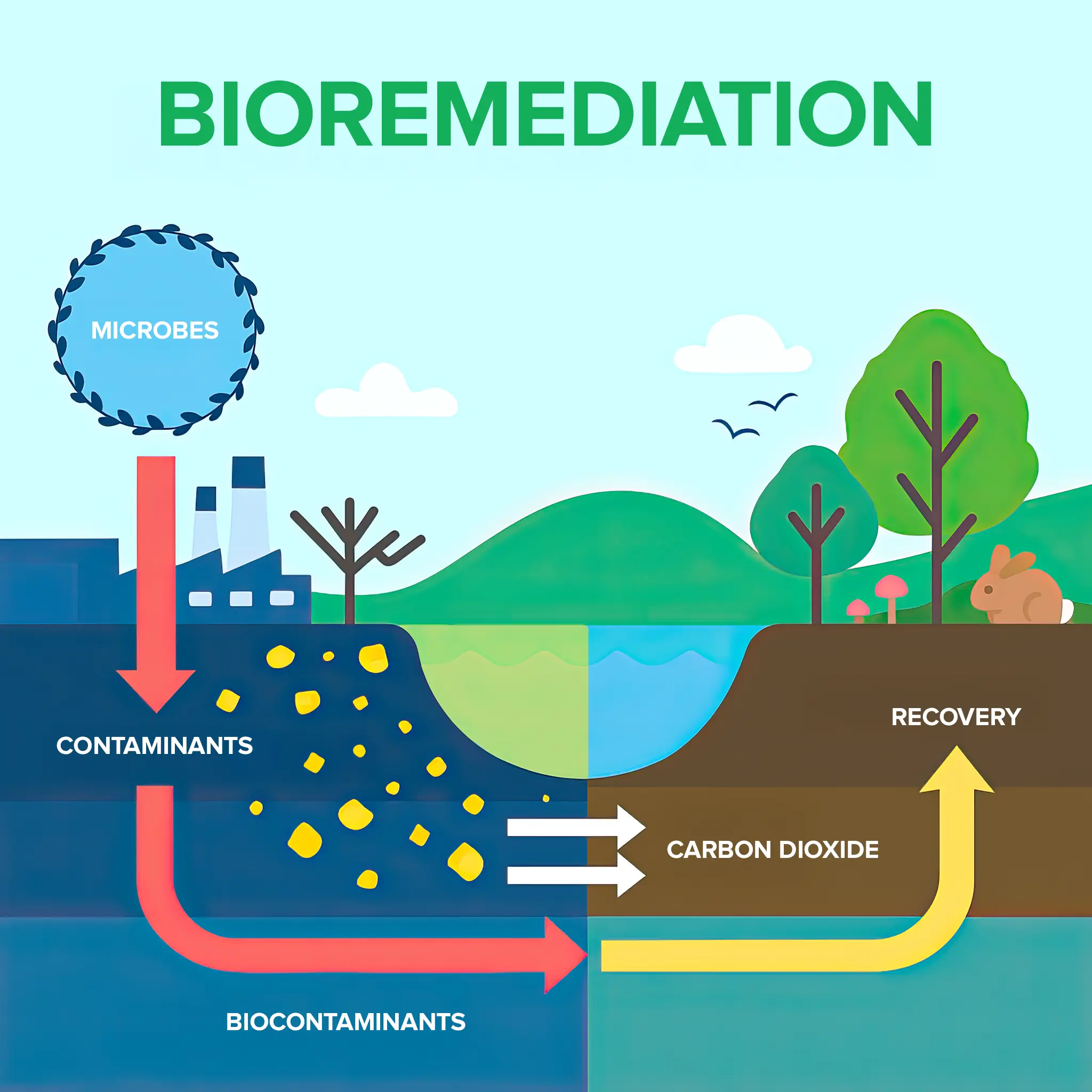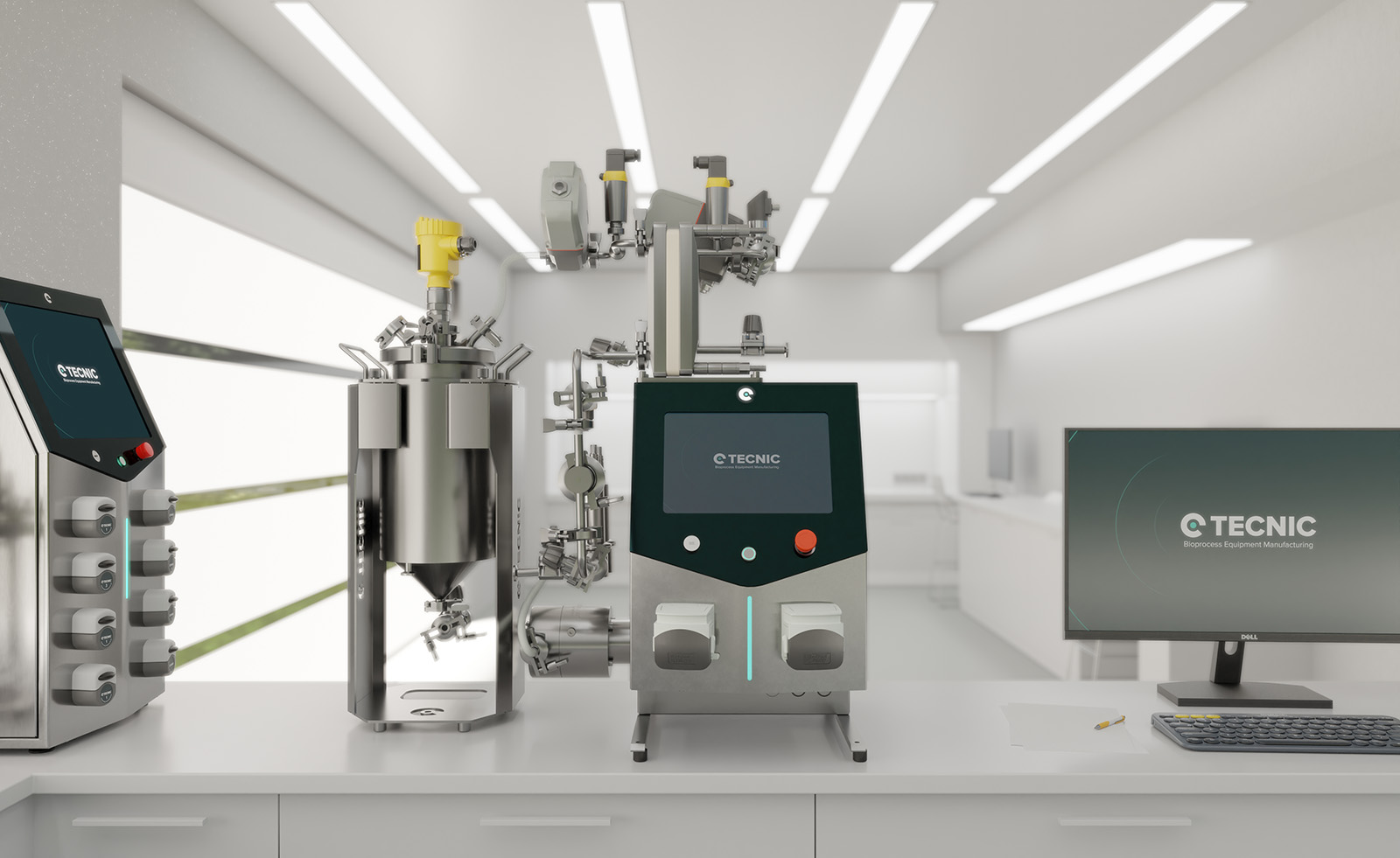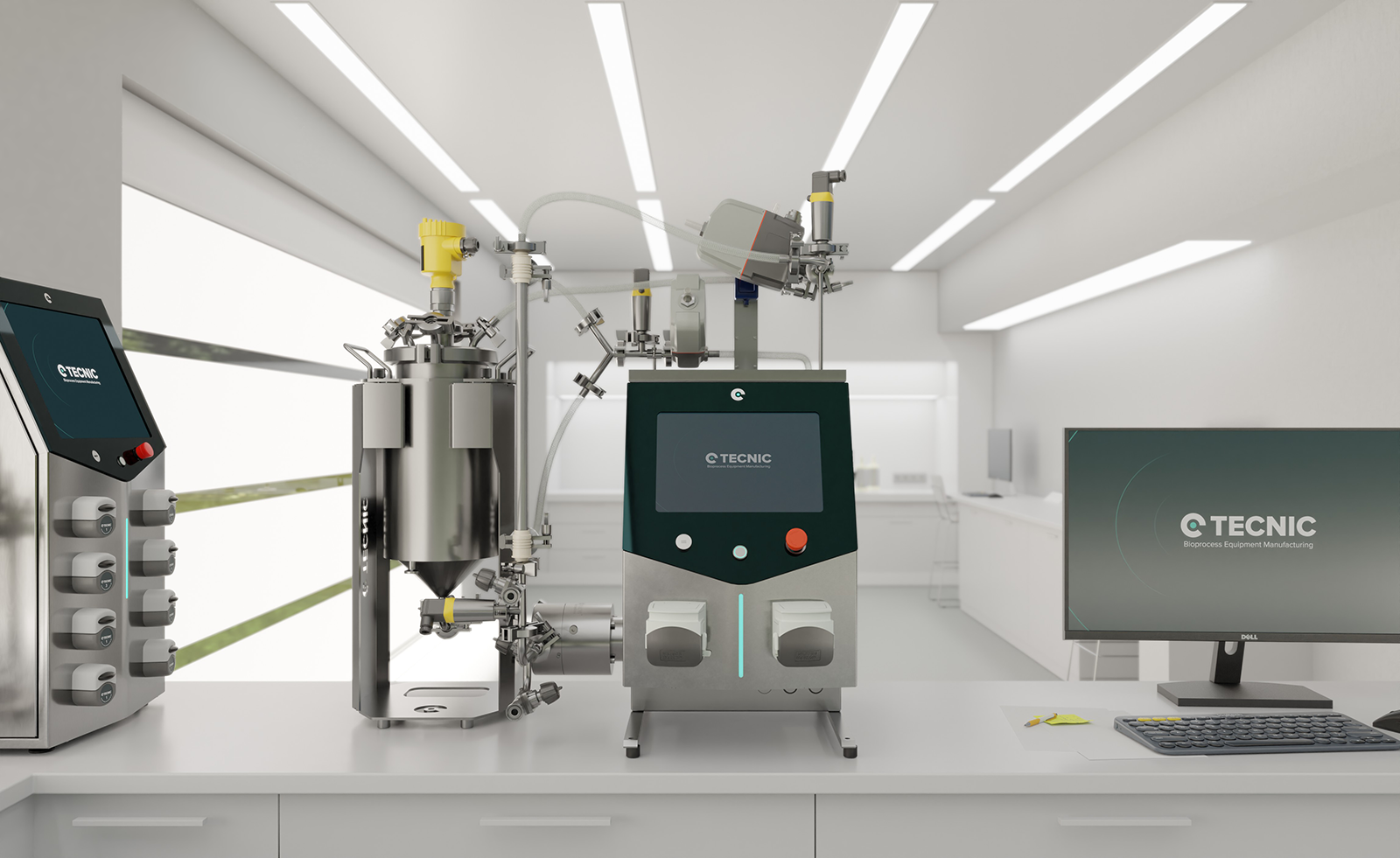Oceans cover approximately 70% of the Earth's surface and host an enormous biological diversity with great potential for sustainable use. Blue biotechnology (also known as marine biotechnology) is the scientific field that harnesses marine organisms, such as algae, bacteria, fungi, fish, or invertebrates, to develop new products, processes, and services.
This emerging approach is part of the Blue Economy, promoted by international organizations (e.g., the European Union through the Green Deal) to sustainably integrate activities that depend on the ocean (fishing, aquaculture, marine biotechnology, etc.). In this context, blue biotechnology seeks to leverage marine resources under sustainability criteria, contributing to both the blue economy and the ecological transition. It promotes the use of the vast variety of marine life for biotechnological solutions. For instance, hundreds of new bioactive marine compounds are discovered every year that can be transformed into food, medicines, or advanced materials.

What is blue biotechnology?
Blue biotechnology applies biotechnological techniques in aquatic environments to convert marine resources into useful products. In other words, it is the set of processes that uses marine and freshwater organisms (microalgae, algae, bacteria, fungi, fish, sponges, etc.) as raw material to create goods and services.
For example, this discipline investigates aquatic compounds to develop drugs, functional foods, biofuels, and cosmetics from algae and other marine species. In this way, marine biotechnology harnesses the biodiversity of aquatic ecosystems to drive industrial and pharmaceutical innovation by exploring lesser-known natural resources.
What is blue biotechnology used for?
Blue biotechnology has a wide range of applications in society and industry. It helps discover and produce new bioactive compounds from marine organisms, which can be converted into food, nutritional supplements, cosmetic ingredients, or pharmaceuticals. Every year, hundreds of novel marine compounds are identified thanks to marine research, highlighting the innovative potential of these ecosystems.
Besides producing health and consumer goods, blue biotechnology also supports clean and sustainable technologies. For example, it enables the development of low-carbon biofuels and biodegradable materials that help reduce industrial pollution. It also contributes to environmental solutions through biological systems that clean contaminated water and genomic techniques used to monitor habitat changes caused by climate change. In short, its applications span multiple sectors, including agriculture, human health, renewable energy, and environmental protection.
A key additional use is bioremediation. Certain marine bacteria and microalgae are used to decontaminate water and soil. For example, strains of marine bacteria have been isolated that can break down hydrocarbons from oil spills or degrade plastics in the ocean. Microalgae are also used in wastewater treatment systems to remove nitrogen, phosphorus, and heavy metals before returning clean water to the environment. Overall, blue biotechnology provides bioprocesses that both generate valuable products and help restore polluted aquatic ecosystems.

What are its applications in industry and agriculture?
In industry, blue biotechnology offers innovative and sustainable solutions. For example, marine microalgae are used to produce second- and third-generation biofuels (bioethanol, biodiesel) as alternatives to fossil fuels. Several companies have conducted test flights using algae-based fuels. Continental Airlines completed a flight powered by a blend containing biodiesel derived from microalgae. Algae are also processed to obtain high-value chemical compounds (such as carotenoids, fatty acids, and polysaccharides) used in the food and pharmaceutical industries. Other industrial processes use marine enzymes to produce bioplastics and biodegradable materials, researchers are even exploring algae for bio-rubber.
In agriculture and agribusiness, blue biotechnology contributes biofertilizers and biostimulants derived from marine algae. These products improve crop nutrition and resistance to pests, reducing the need for synthetic fertilizers and pesticides. For instance, microalgae extracts contain compounds that promote healthier, more sustainable plant growth. Additionally, byproducts from the fishing and algae industries (e.g., crustacean waste or processed algae) are used to make protein-rich aquaculture feed, closing material loops and reducing waste. Altogether, blue biotechnology enhances the efficiency of industrial and agricultural production through the responsible use of marine resources.
How is it applied in health and medicine?
Blue biotechnology has opened up vast opportunities in medicine and healthcare. Many new drugs are derived from marine organisms, particularly for treating complex diseases. For example, anti-cancer compounds isolated from tunicates and marine sponges have led to innovative medications. The Spanish company PharmaMar developed Yondelis, a drug based on a marine tunicate that became the first marine-derived anti-tumor treatment approved in Europe.
In addition to anti-cancer drugs, marine-sourced antivirals, antibiotics, and cardioprotective agents are being studied. Some marine peptides and polysaccharides show antimicrobial or anti-inflammatory activity and are being investigated to treat resistant infections and cardiovascular conditions.
Also noteworthy are marine nutraceuticals: for instance, microalgae oil is rich in omega-3 fatty acids (EPA, DHA) used as nutritional supplements to support heart and brain health. In fact, blue biotechnology transforms aquatic organisms into high-value food supplements (proteins, vitamins, antioxidants) that benefit our diet. Lastly, it allows for the development of marine vaccines and probiotics: in aquaculture, vaccines derived from marine compounds are used to protect fish and shellfish from disease, reducing antibiotic use. Likewise, aquatic-origin probiotics help balance gut microbiota in farm animals. In short, blue biotechnology provides unique marine compounds transformed into medicines, supplements, and healthy additives for both humans and animals.
What are its applications in cosmetics?
In the cosmetics sector, blue biotechnology explores marine ingredients with multiple benefits for skin and hair. Many cosmetic products include extracts from marine algae (such as brown algae like fucus or laminaria) due to their antioxidant, moisturizing, and regenerative properties. These extracts contain marine polysaccharides, vitamins, and trace elements that protect the skin from aging and improve elasticity. Specialized studies show that anti-wrinkle creams and antimicrobial facial products enriched with marine phytochemicals are already on the market.
Another example is marine collagen, obtained from fish and algae tissues, used in face masks and hair treatments for its ability to strengthen cellular structure. Additionally, thalassotherapy (treatments using seawater, algae, and marine mud) directly utilizes ocean water properties for spa therapy, relaxation, and rehabilitation. Altogether, blue cosmetics bring natural marine-based ingredients to consumers, offering sustainable alternatives to traditional synthetic compounds.

How does blue biotechnology help the environment?
Blue biotechnology provides specific tools to protect and restore marine ecosystems. A prominent use is the promotion of blue carbon capture. Marine ecosystems such as mangroves, marshes, and seagrass meadows absorb CO₂ from the atmosphere very efficiently. Biotechnology enables the cultivation or restoration of these systems to store carbon long-term. At the microbial level, it has been documented that each kilogram of cultivated microalgae biomass can fix up to two kilograms of CO₂, helping reduce greenhouse gas concentrations.
Blue biotechnology is also applied to bioremediation of pollutants. In wastewater treatment plants, mixed microalgae cultures remove nitrates, phosphates, and heavy metals, returning treated water to the environment without harmful residues. Researchers have identified marine bacteria capable of breaking down oil, plastics, and pesticides, paving the way for biological clean-up of spills and polluted coastlines. In summary, these methods rely on natural processes (algae cultivation, marine enzymes, microbial communities) to detoxify damaged aquatic ecosystems.
What are some real-world examples of blue biotechnology?
Blue biotechnology applications are already in use across many sectors. Here are some specific examples:
- Marine-derived anti-cancer drugs: Spanish company PharmaMar developed Yondelis, the first marine-based anti-tumor drug approved in Europe. PharmaMar also markets two other cancer drugs based on marine compounds. Researchers in other countries are working with marine sponges and corals to find similar treatments.
- Bio-rubber tires from algae: Pirelli patented car tires made from natural rubber derived from green marine algae. This sustainable bio-rubber reduces the need for synthetic rubber in tire production.
- Algae-based biofuels: Several companies are testing fuels made from microalgae. In 2011, Continental Airlines successfully completed a flight using a blend containing algae-based biodiesel. Other projects aim to produce large-scale diesel and marine fuels from oil-rich algae.
- Marine cosmetics: High-end cosmetic brands are using extracts from algae and plankton in their formulations. For example, anti-wrinkle creams contain natural antioxidants from red and brown algae. Some biotech sunscreens use marine pigments (phytochemicals from algae) to protect skin from UV rays.
- Functional foods and supplements: Nutritional supplements based on microalgae (such as spirulina or chlorella) are sold for their high nutritional value (proteins, vitamins, omega-3). Researchers are also exploring microalgae as ingredients for fortified foods and healthy beverages.
- Biofertilizers and fish feed: Biotech companies offer liquid biofertilizers made from marine algae for agricultural use. These improve soil fertility naturally. Likewise, aquaculture feed is enriched with algae byproducts to boost fish nutrition.
- Bioremediation: Environmental projects are using marine microorganisms to clean up pollutants. Some microbial strains can degrade hydrocarbons, heavy metals, and plastics. Scientists are testing how to apply them in coastal and soil clean-up operations.
These examples demonstrate how marine science translates into real-world solutions: innovative drugs, clean fuels, eco-friendly consumer products, and powerful tools for environmental protection.

What are the benefits and challenges of blue biotechnology?
Blue biotechnology offers significant advantages for society and the environment. It uses renewable marine resources, reducing pressure on terrestrial ecosystems and helping diversify food and energy production. It drives innovation in key industries by providing new drugs, nutraceuticals, and advanced materials. It also supports the circular economy: many projects reuse marine byproducts (e.g., discarded algae) in new applications. Finally, it contributes to global environmental goals (food security, ocean health, climate change mitigation) due to its sustainable nature.
Despite its potential, blue biotechnology faces significant challenges. Many marine processes are still difficult to scale industrially. Large-scale cultivation of algae and marine organisms requires major investment and the resolution of technical issues (e.g., controlling salinity, light, and temperature in large bioreactors).
There are also environmental concerns: marine compound harvesting must not harm ecosystems or biodiversity. Sustainable management strategies are essential to protect sensitive habitats while tapping into marine resources. Finally, a major technical hurdle remains in accessing deep-sea niches with unknown biodiversity (submarine probes, metagenomics, etc.). In conclusion, blue biotechnology requires ongoing support in research, infrastructure, and international cooperation to overcome these obstacles.
Conclusion
Blue biotechnology is emerging as one of the most promising fields in the bioeconomy. By leveraging the vast biodiversity of marine environments, it provides sustainable solutions to challenges in medicine, energy, agriculture, cosmetics, and environmental restoration. From microalgae-derived fuels to marine-based pharmaceuticals and eco-friendly materials, the ocean continues to inspire new innovations with both economic and ecological value.
While blue biotechnology is essential, it's just one part of a broader biotechnological landscape. There are other types of biotechnology, such as red, green, and white, that focus on healthcare, agriculture, and industrial processes, respectively. If you're curious to learn more about all the branches of biotechnology and how they shape our world, we invite you to explore our dedicated blog post covering the full range of biotechnology types.
Frequently Asked Questions (FAQ)
Blue biotechnology is the branch of biotechnology that uses marine organisms (like algae, bacteria, or fish) to develop products in health, energy, cosmetics, and environmental sectors.
Examples include drugs like Yondelis®, cosmetics with marine collagen, algae-based biofertilizers, microalgae biofuels, and bioremediation systems to clean polluted water.
It promotes sustainability, innovation in medicine, circular economy practices, carbon capture, and the development of natural alternatives to synthetic products.
It faces high production costs, scalability limitations for marine processes, and the need to protect marine ecosystems when extracting bioresources.
Blue biotechnology uses marine organisms and ecosystems, while green biotechnology focuses on land-based agricultural applications like crops and fertilizers.
References
- European Commission. (2021). Blue Bioeconomy Report 2021. Directorate-General for Maritime Affairs and Fisheries.
FAO. (2020). The State of World Fisheries and Aquaculture 2020. Food and Agriculture Organization of the United Nations.
OECD. (2019). Marine Biotechnology: Enabling Solutions for Ocean Productivity and Sustainability. Organisation for Economic Co-operation and Development.
UNEP. (2021). Carbon Dioxide Removal and Marine Ecosystems. United Nations Environment Programme.
- Prabha, S. P., Nagappan, S., Rathna, R., Viveka, R., & Nakkeeran, E. (2020). Blue biotechnology: A vision for future marine biorefineries. In L. Singh, A. Yousuf, & M. Rathore (Eds.), Refining biomass residues for sustainable energy and bioproducts (pp. 463–480). Academic Press.
- European Commission. (n.d.). Blue Biotechnology. EU Blue Economy Observatory. Retrieved June 11, 2025







